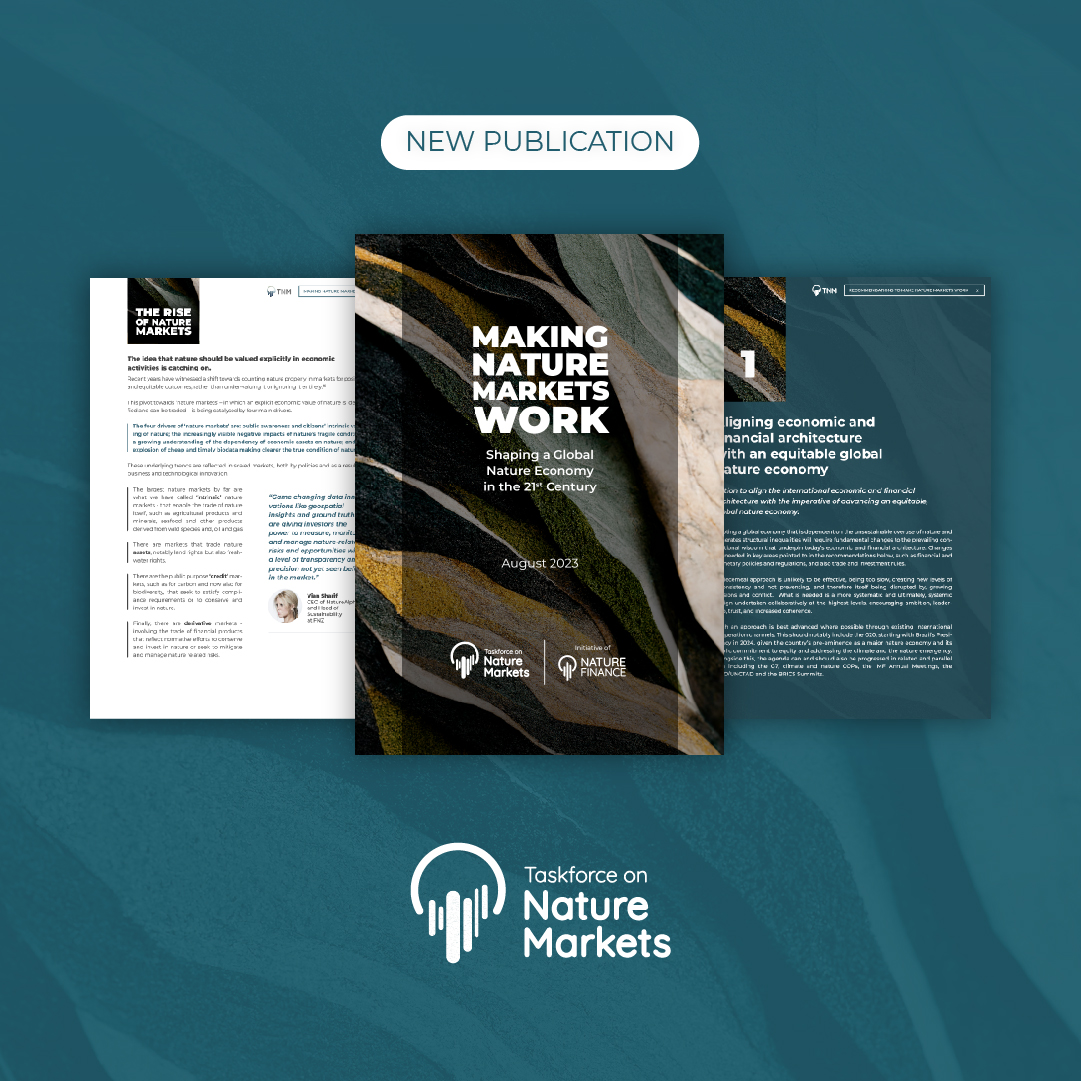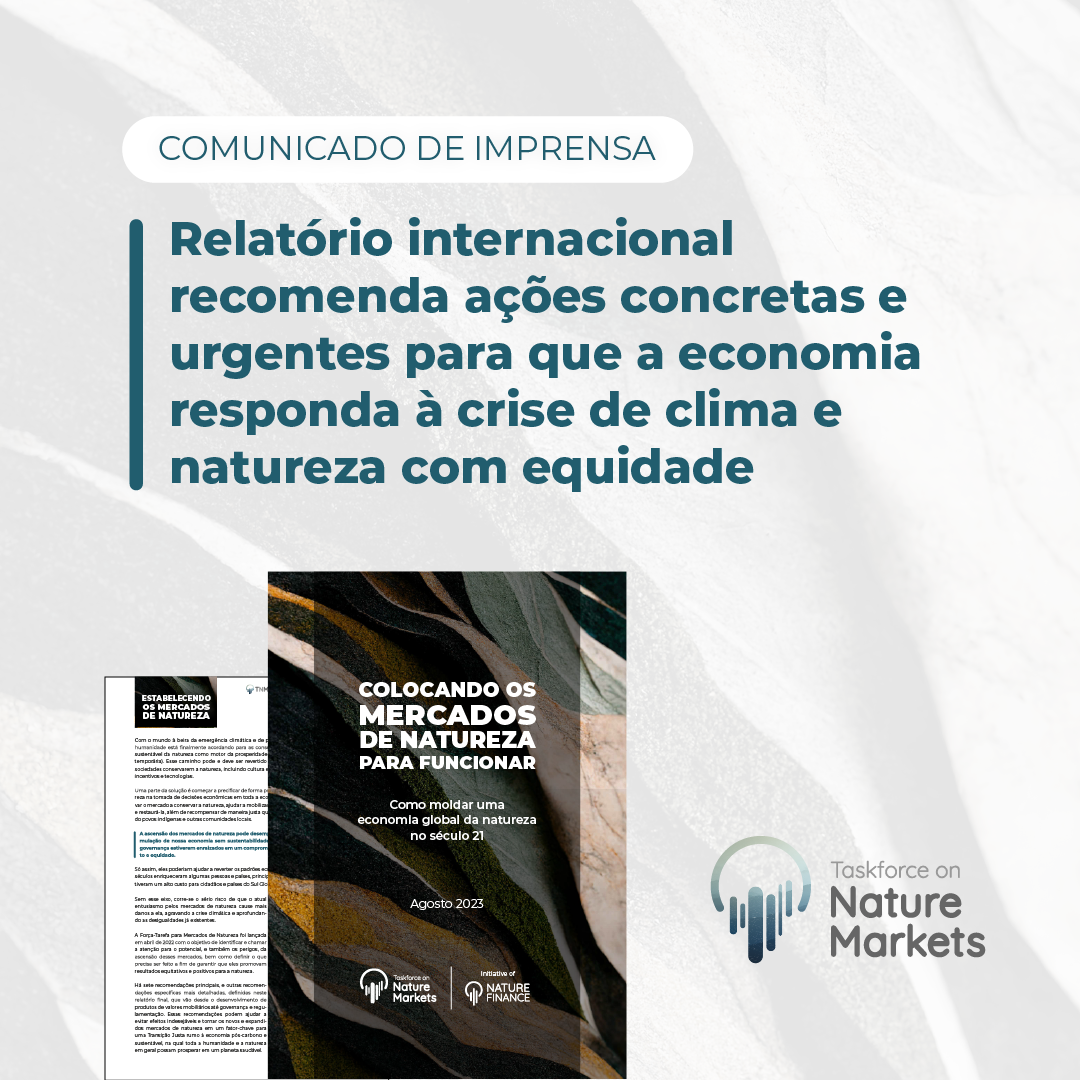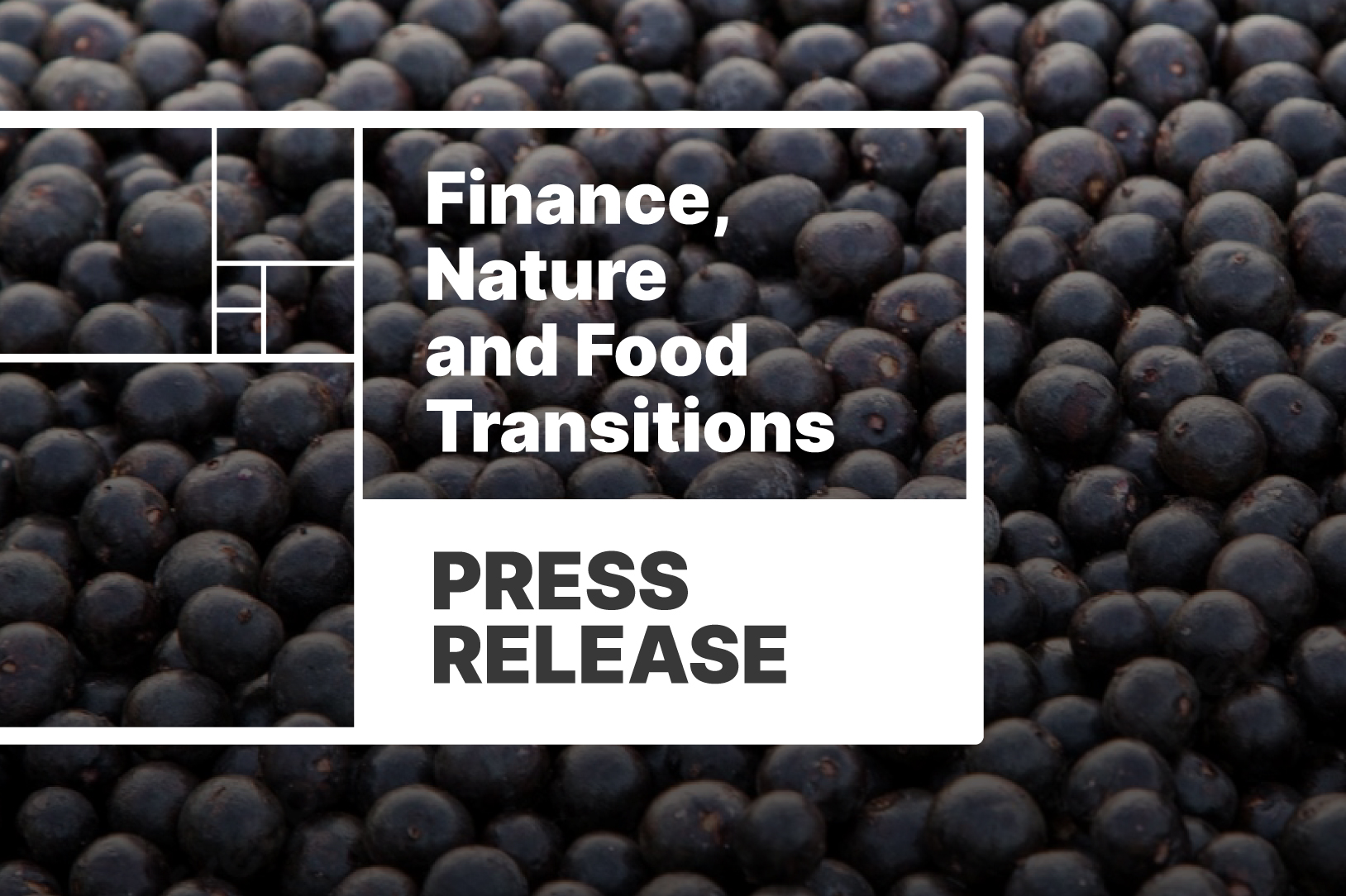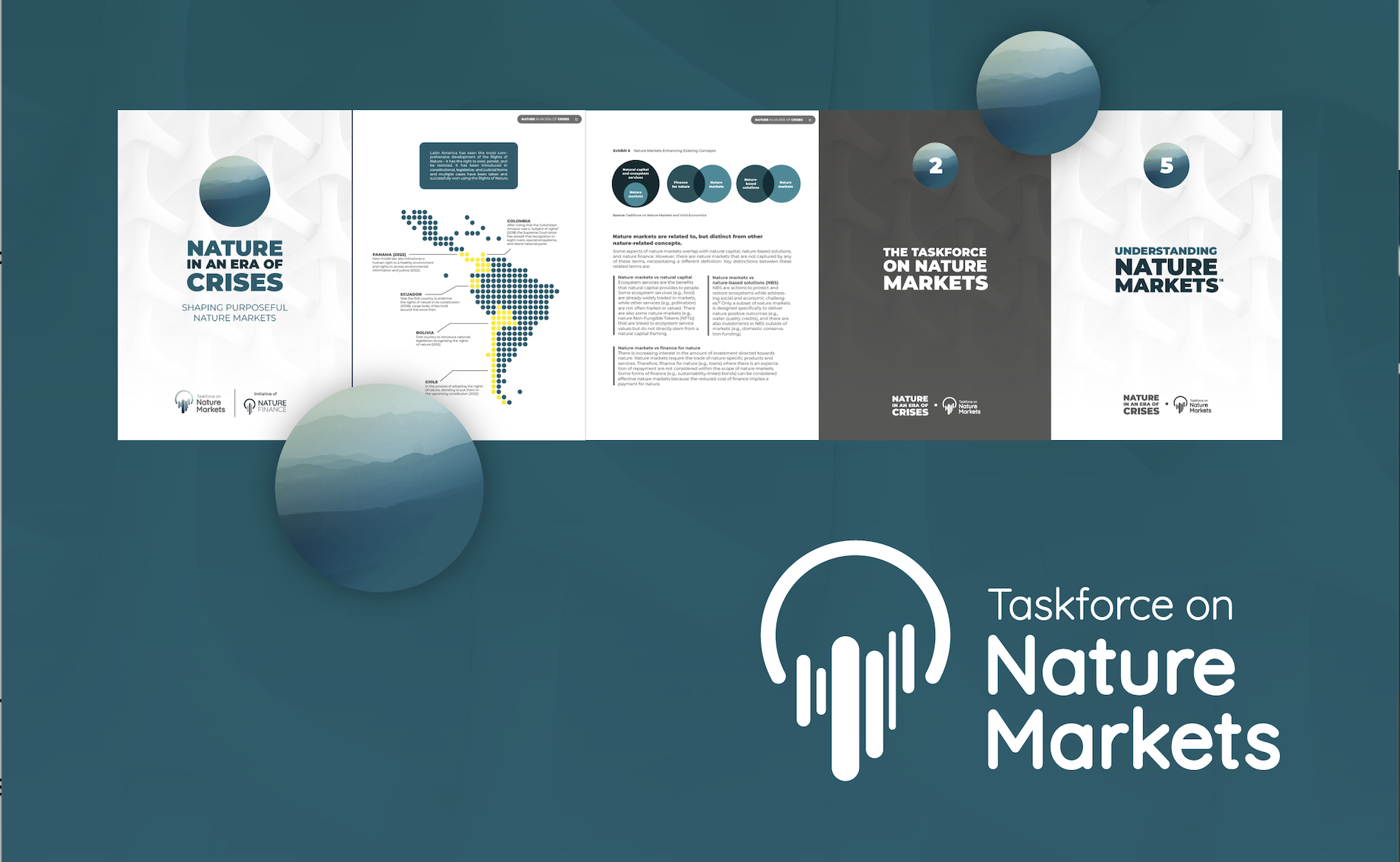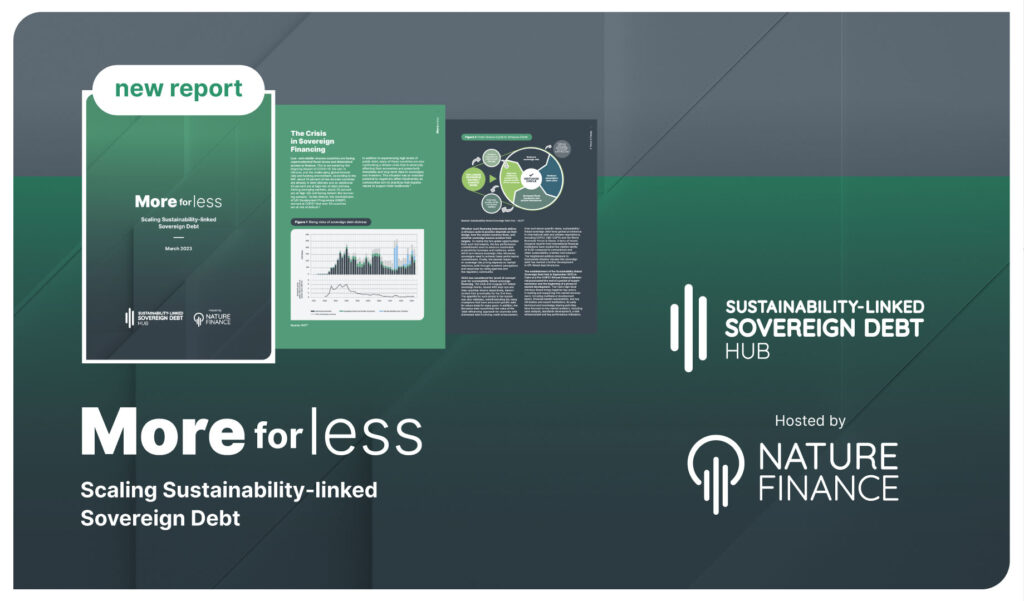
- Potential of performance-based financing mechanism in tackling debt and climate crises in vulnerable countries detailed in new paper.
- ‘More for less’ details seven pathways to implement the innovative instrument
- Paper comes ahead of IMF Spring Meetings, where debt and climate are high on the agenda
Brussels, Friday 31 March 2023 – The vast potential of sustainability-linked sovereign debt in tackling both the emerging markets debt and climate crises is detailed today in a new paper ahead of the IMF Spring Meetings, where the topics will be high on the agenda.
‘More for less’ from the Sustainability-Linked Sovereign Debt Hub charts out seven scalable pathways through which this instrument can solve the triple challenge of delivering debt sustainability, climate and nature goals, and economic resilience.
Sustainability-linked sovereign debt – a performance-based financing instrument that commits the issuing country to achieving certain sustainability targets – had its proof-of-concept year in 2022.
The seven scaling pathways include credit enhancement for lower-rated sovereigns, embedding sustainability-linked sovereign debt into long-term climate/nature finance initiatives, harmonising key performance indicators (KPIs) and standardising sustainable performance bond (SPB) frameworks to accelerate ‘go-to-market’, and building country debt management offices’ (DMOs) capacity.
“Sovereign sustainability-linked bonds offer the promise of reducing EMDE financing costs while also committing governments to urgently needed climate and nature policies – but only if done right. This paper shows how their potential can be maximised.”
Jeromin Zettelmeyer, Director, Bruegel
From a starting point of only US$3.5 billion at the end of 2022, the issuance of sovereign sustainability-linked bonds from emerging and developing economies (EMDE) has the potential to reach between US$250 billion and US$400 billion by 2030, according to NatureFinance.
This paper follows the newly-published 6th IPCC report, which warns of rising climate mitigation and adaptation costs for vulnerable economies. Currently, 60% of Low-Income Countries are already in or at high-risk of debt distress.
This is especially felt in African nations, where 58% of countries assessed by the World Bank are at risk of debt distress. Combined, this amounts to 24.1% of their combined 2021 GDP.
“Scaling this innovative debt instrument can advance climate and nature goals while avoiding the vicious cycle of unsustainable debt, deteriorating creditworthiness, and diminishing economic health that is currently threatening emerging markets and developing countries.”
Arend Kulenkampff, Director, Sustainability-linked Sovereign Debt Hub
The inaugural 2022 issuances of sustainability-linked bonds by Chile and Uruguay were several times oversubscribed, validating market interest. Furthermore, in 2021 Belize executed a ‘debt for nature’ swap using performance-based financing coupled with credit enhancement. The Belize blue bond as part of this swap saw a rating uplift 16 notches higher than its sovereign credit rating.
Scaling sustainability-linked sovereign debt is aligned with solutions highlighted by the Multilateral Development Bank’s Capital Adequacy Frameworks and the spirit of the Bridgetown Agenda as well as the Sustainable Debt Coalition (SDC) launched by the Egyptian COP27 presidency and supported by the UN Economic Commission for Africa (UNECA).
“African countries want debt instruments to factor in resilience. Inter-African coordination on the use of key performance indicators for debt issuances will be critical to address this, improving the affordability of sustainable finance instruments and up-scaling the upsides of these instruments. The continent is speaking with one voice on the need to address the sustainable finance gap and reform the international financial architecture to address debt sustainably”
Jean-Paul Adam; Director for Technology, Climate Change and Natural Resources Management, UNECA
“Governments in many countries are looking for innovative financing instruments to address the triple crisis and World Bank teams have been working to design investments which can incentivise sovereign borrowers to achieve ambitious, predetermined sustainability performance objectives, measured using key performance indicators (KPIs). We look forward to working with partners to scale up these solutions.”
Fiona Stewart, Lead Financial Sector Specialist, Finance, Competitiveness, and Innovation Global Practice at the World Bank.
The paper was released by the Sustainability-linked Sovereign Debt Hub on Friday March 31st at a Bruegel and NatureFinance public event on scaling sustainability-linked sovereign debt.
———-
Notes to editors:
Key statistics:
- One in five countries is experiencing fiscal and financial stress. (Barbados Ministry of Foreign Affairs and Foreign Trade 2022).
- Over the past decade, the external debt of lower income countries has nearly tripled to $1 trillion, and 60 % of these countries are in or at risk of debt distress for the first time (IMF 2022).
- Around 15 % of low- income countries are already in debt distress and an additional 45 % are at high risk of debt distress. Among emerging markets, around 25 % are at high risk and facing default-like borrowing spreads (IMF 2023).
- Record breaking number of approximately 1 million animal and plant species currently under threat of extinction. (IPBES 2022)
- Sovereign bonds are the largest asset class for many institutional investors, representing almost 40% of the $100 trillion global bond market. (World Bank 2022)
- A credit guarantee, insurance policy or other credit enhancement mechanisms should result in a higher rating for an instrument, above the sovereign ceiling, therefore unlocking demand from more conservative investors. For example, the Belize Blue Bond, issued as part of its debt for nature swap, obtained a Moody’s credit rating 16 notches higher than its sovereign credit rating at the time.
- The potential hit to global GDP from a collapse in services such as wild pollination, provision of food and timber in the order of 2.3 percent of global GDP (US$ 2.7 trillion) annually by 2030 (World Bank 2021).
- Global debt was estimated at US$290 trillion in November 2022, with 80% of new debt burden coming from emerging markets, where total debt is approaching US$100 trillion (IIF).
About The Sustainability Linked Sovereign Debt Hub:
The Sustainability-linked Sovereign Debt Hub brings together actors from the entire spectrum of the sovereign sustainability-linked debt universe. Founded to facilitate the growth of the performance-based sovereign debt market, the Hub supports initiatives that build nature and climate performance into models of sovereign financing. A high-level Advisory Board provides the Hub with strategic guidance and assistance.
Contact:
Jessica Ware, Browning Environmental Communications – jessica@browningenvironmental.com

